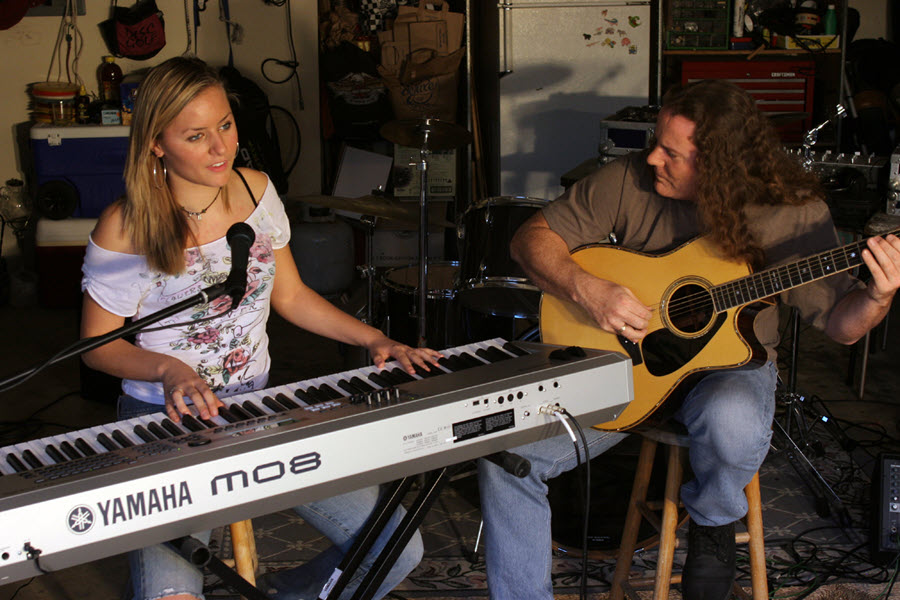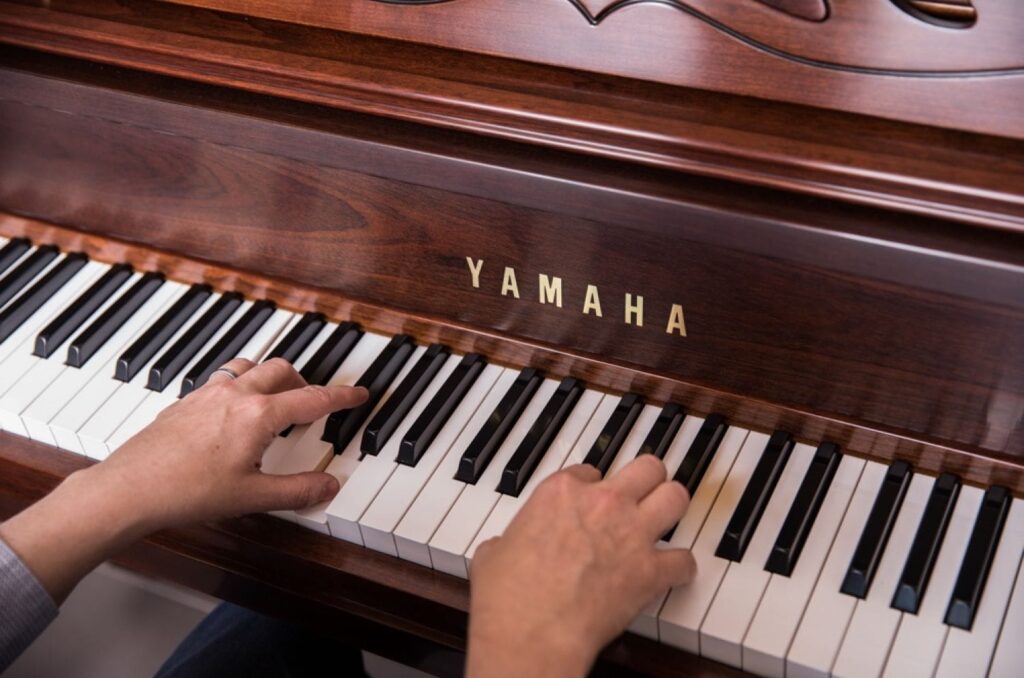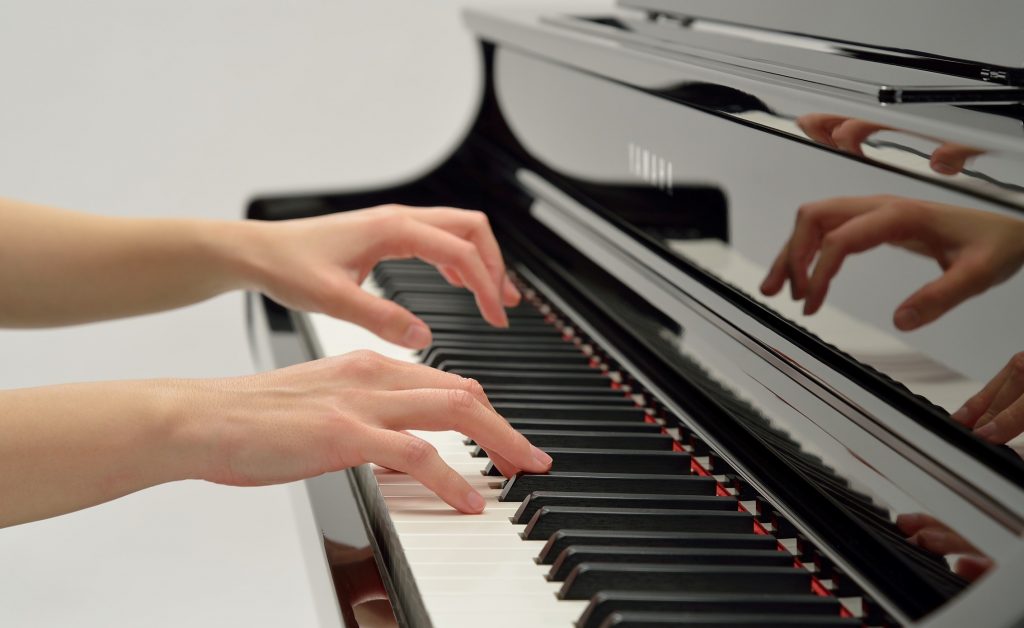Tagged Under:
How to Harmonize a Melody Line
Enhance your melodies with additional notes.
Especially when playing pop, jazz and show tunes, keyboardists often play the melody with their right hand as a single note line. This allows listeners to easily recognize and appreciate the song.
As the tune progresses, however, things can get pretty repetitive if there isn’t someone singing the words, so it’s good to vary your playing to keep things interesting. A great way to do that is to add another note to the melodic line, as singers often do when performing a duet. This is called harmonizing a melody.
Here’s a guide to harmonizing effectively.
It’s All About the Key and the Chords
To add harmony notes to a melody line, you need to know two things:
- The key the song is in; and
- What the chords are
The key is shown at the beginning of the score/sheet music as a grouping of sharps or flats just after the treble and bass clef. Knowing the key will tell you what scale you can choose your harmony notes from.
For this posting, we’ll be exploring various ways to harmonize this short musical phrase:
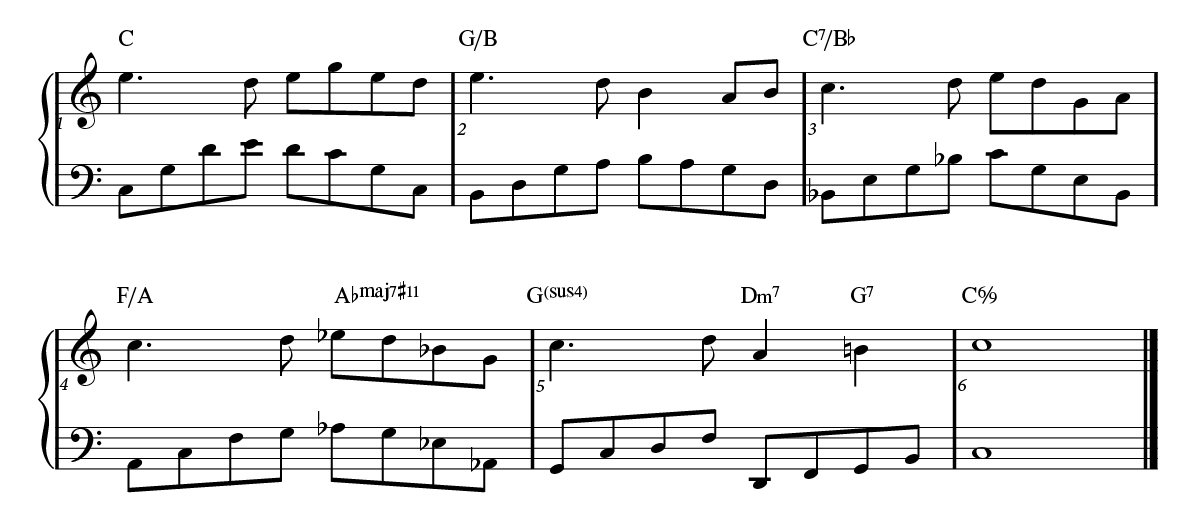
As you can see (and hear), this example uses a flowing, arpeggiated left-hand part rather than just block chords. And since there are no sharps or flats in the key signature, that means it is in the key of C major. Your harmonizing note choices should therefore come mainly from the C major scale (i.e., all the white keys):

Being aware of the chord symbols above the bars will ensure that the harmony notes you choose are part of the chord. This isn’t a strict rule, as you’ll soon see, but you should at least avoid playing non-chordal notes on a beat (they can sometimes be okay for quickly moving passages).
Choosing the Best Harmony Notes
Now that you know the key and the eligible notes, you can start to build a harmony part. It’s best to leave your melody as the top note of your right-hand part so the listener can hear it clearly. For that reason, I advise adding a second note below the melody.
The most common and pleasing interval to use for that purpose is a third, which is either three or four half-steps below the melody, depending upon the key (in the key of C, it will be A, three half-steps below C). The notation below shows that interval both above and below the root tone, followed by a C major scale played in thirds, with the melody on top:

The next most common note choice would be a sixth (either eight or nine half-steps away), shown below in the key of C.

You can also use intervals of a fourth (five half-steps) or a fifth (seven half-steps), but they should be used sparingly since they tend to impart a more exotic, less common sound, especially if used frequently.

Let’s start by harmonizing our melody using thirds as much as possible.

Thirds work great for the first bar, but in bar 2 if I used a third below the E note I would be playing a C note over a G major chord, which would clash with the B note in the bass. In other words, it would be playing a suspended fourth along with the natural third of the chord — and that’s not a good sound! For that reason, I switched to a fourth for the harmony. On the first beat of bar 3 I could have used an A (a third below), but I chose the G to better spell out the C chord. Because the chord has a B-flat in it, I made sure that my harmony line also used the flatted note.
Bar 4 contains a chord that is not from the key of C (the A-flat major seventh), so I modified the thirds to use notes from the A-flat major scale. Bar 5 goes back to the key of C, and for the last chord I just chose a voicing to give me a fuller chord to end on.
The bottom line is that you can be flexible with your note choices as long as you observe the key and the current chord. Beyond that, you can do whatever pleases your taste.
Using More Varied Intervals
Another approach would be to vary your choices a little more, not holding so rigidly to mainly using thirds. For example:
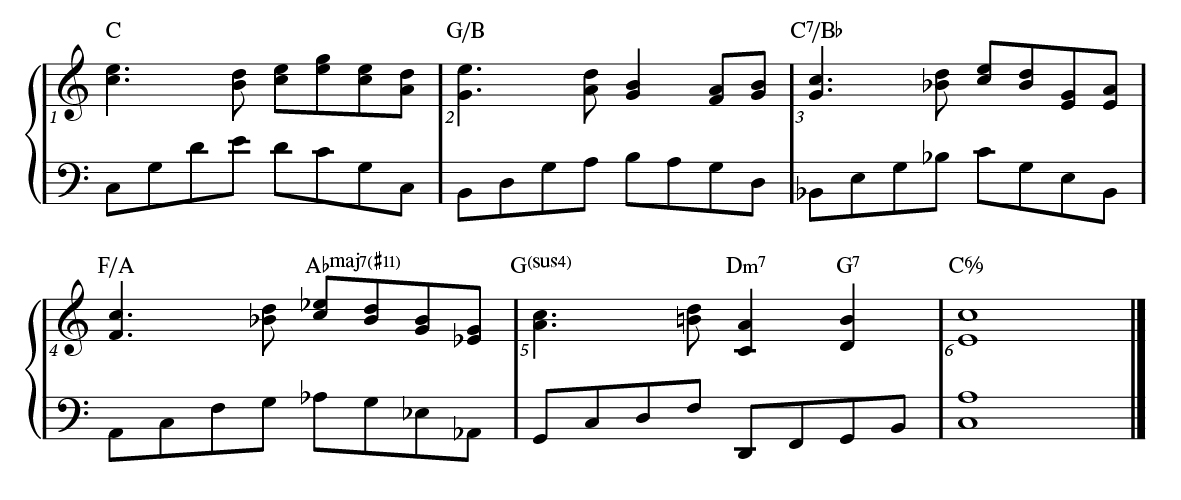
Here I start with thirds, but go to a fourth for the last note in bar 1, and then a sixth for the first note in bar 2. For the last note in bar 3, I opted to use a fourth to better spell out the C seventh chord. I chose to use an interval of a fifth at the start of bar 4 in order to get the root tone of the F chord in the voicing. Finally, for the end of bar 5, I switched to sixths for better note spacing between the hands.
This next example employs more sixths, but not all the time. In fact, I use all the suggested options here: thirds, fourths, fifths and sixths. By mixing in other intervals, the harmony stays more interesting and less predictable.
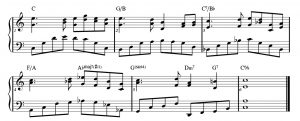
Harmonizing Melodies That Don’t Stay In One Key
As the above example shows, songs don’t always stay in the same key, or they may include chords that come from outside the key. A song may even fully modulate to another key altogether. When you first explore the melody you want to harmonize, you need to look for these situations and try to understand what is happening so you can make good note choices.
This next musical example expands on the previous one, bringing it to some new places harmonically before finally returning to the key of C.
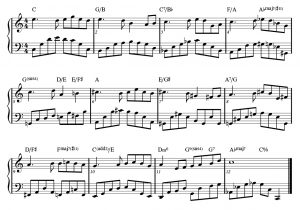
Here, a lot is happening that is not in the key of C. Analyzing it based on what is commonly called “functional harmony,” the phrase appears to visit the key of F in bars 3 and 4, and then modulates to the key of A leading into bar 6. Bars 8 and 9 seem to touch on the key of D (the G-sharp becomes a G natural) before moving back to the key of C at the end of bar 9. You can imagine that the key signature is changing as these chords vary, which would look something like this:
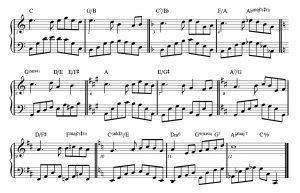
Here are some suggested note choices based on those key signatures and their associated scales:
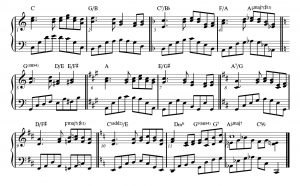
Notice how I used all the suggested harmony intervals at some point, and even used a number of parallel fourths in the second half of bar 9 into the first two beats of bar 10. In the last bar I decided to have the harmony line move in conjunction with the left-hand pattern for a nice effect.
This final example removes the various key signature markings to go back to how the music would likely be printed, and presents yet another variation of harmony note choices:
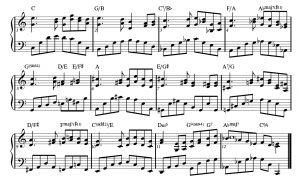
Until next time, happy harmonizing!
All audio examples played on a Yamaha P-515
Check out our other Well-Rounded Keyboardist postings.
Click here for more information about Yamaha keyboard instruments.











